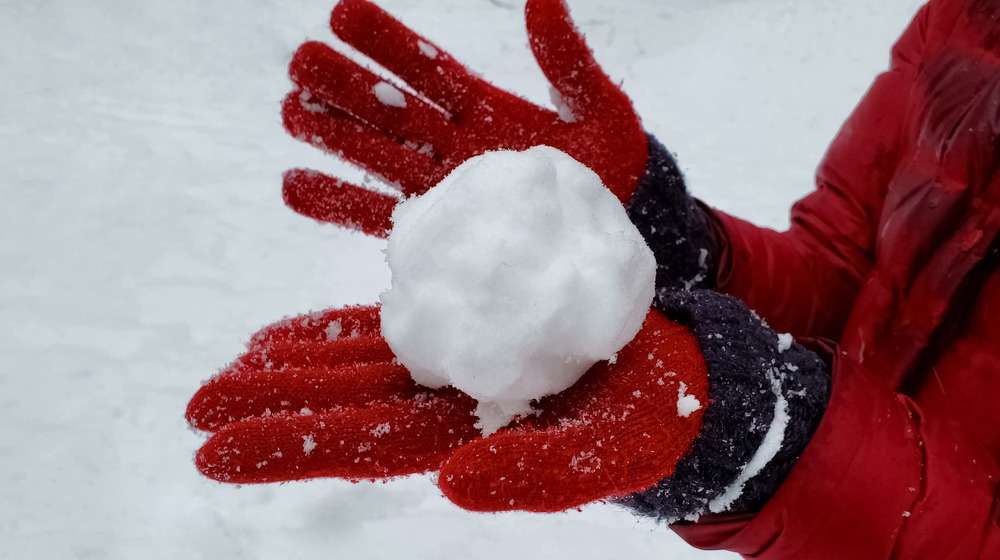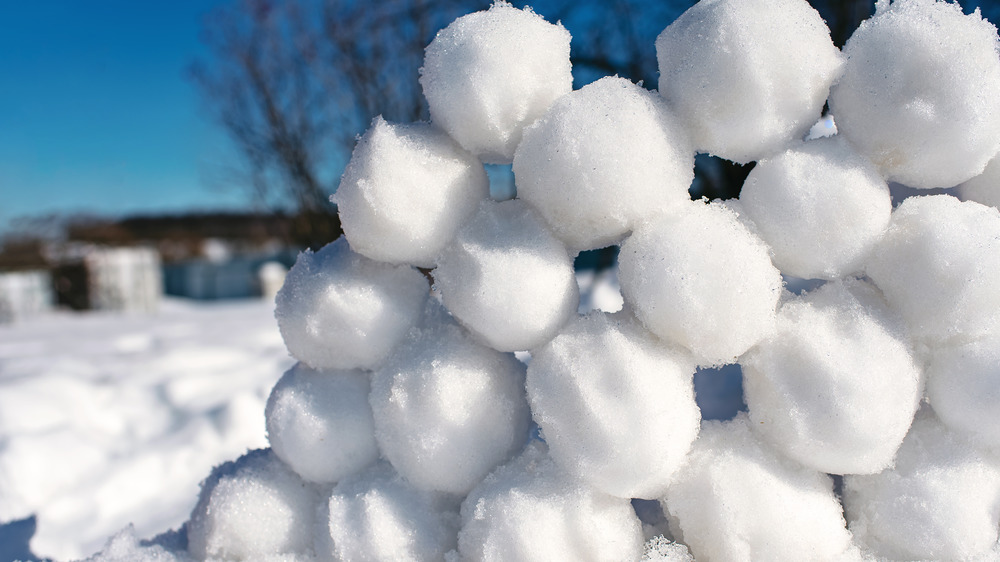The Truth About The 'Fake Snow' TikTok Trend
Not to rag on Gen Z, but are they fine? It's been a terrible year, and many kids still have to go to Zoom school. Maybe that's why people on TikTok now believe snow is a government conspiracy to bring down the people of Texas.
No, really. Gizmodo reported TikTok users have resorted to burning snowballs to prove snow does not exist.
Snow might be one of the worst things about winter if you live in a city (rumors that snow is pretty may only exist in areas where black ice is less prevalent), but it is definitely real.
So, what exactly is happening? Users, mostly in Texas, which recently experienced massive power outages due to a snowstorm, have been burning and microwaving snowballs in a bid to show that snow is fake because it doesn't immediately melt. One TikToker claimed to have put a snowball in the microwave, and then it began to spark as if it had metal.
This isn't the first time TikTok has engaged in a conspiracy theory relating to a real thing. Just a few months ago, TikTok lit up with the idea that Helen Keller didn't exist. And just like before, science and history can prove TikTok is wrong.
Science can explain this
The whole thing is because of a process called sublimation, explained USA Today. During sublimation, something solid, like snow, moves through phases to gas with no liquid phase in between. According to the United States Geological Survey, sublimation usually occurs naturally, such as when dry ice "melts" or turns into a gas. Mountain peaks packed with snow will often be subjected to weather conditions that sublimate the snow instead of melting, so the snow becomes vapor.
Slate even conducted their own experiment to see how it works. It turns out, snow is porous, so the snow that hasn't vaporized yet due to sublimation is absorbed within the snowball. Ice, which is smooth, will not do the same.
Heat is a crucial ingredient to sublimation, though given time, the solid mass, in this case, the snowball, would eventually melt into water if the heat source was kept on it longer. In other words, the TikTok videos don't keep the flames on long enough for the snowball to finish the process and eventually melt. As for the microwaved snow, it's a hoax.
This year isn't even the first time people wondered if snowfall was a government conspiracy. In 2014, Atlanta experienced heavy snow, and Twitter users spread rumors that snow is fake because it won't melt when you put a flame to it.
In other words, don't believe everything on TikTok and listen to your science teachers, kids.

